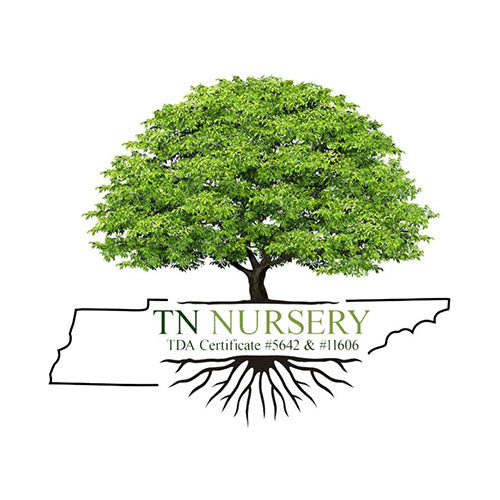Embracing Perennials, Ferns, and Native Trees
The yearning for nature's serenity must often be fulfilled in the concrete jungles of urban environments. However, with careful planning and green ingenuity, transforming a space into an urban oasis brimming with life is possible and immensely rewarding. Among the plethora of plant choices available, perennials, ferns, and native trees stand out as excellent options to infuse vibrant greenery and tranquility into the bustling cityscape.
Perennials: The Backbone of Sustainable Beauty
Perennials form the cornerstone of any urban oasis with their enduring nature and stunning seasonal displays. Unlike annuals that need constant replanting, perennials return year after year, reducing maintenance efforts and costs. Their diverse range ensures a continuous kaleidoscope of colors, textures, and forms throughout the seasons. Factors like sunlight, soil type, and climate are pivotal when selecting perennials for an urban oasis. Coneflowers (Echinacea), daylilies (Hemerocallis), and hostas are popular due to their adaptability and striking appearance. These plants beautify the landscape and attract pollinators, adding an extra layer of ecological richness.
Ferns: Elegance in Simplicity
Ferns, with their delicate fronds and ancient lineage, bring elegance and timelessness to any green space. Their lush, feathery foliage adds texture and softness, soothingly contrasting the often harsh urban surroundings. One fascinating fern species that deserves attention is the Christmas fern (Polystichum acrostichoides). This native fern earned its name due to its evergreen nature, retaining its vibrant green color even during winter. Its ability to thrive in various light conditions and its adaptability to different soil types make it an ideal choice for urban gardens seeking low-maintenance elegance.
Native Trees: Pillars of Biodiversity
In the quest to craft an urban oasis, the significance of native trees cannot be overstated. Native trees contribute to the aesthetic appeal. They provide essential ecosystem services, such as oxygen production, carbon sequestration, and habitat provision for urban wildlife.
The Red Maple (Acer rubrum) stands as a symbol of resilience and adaptability. Its red-hued leaves in autumn paint the landscape with fiery beauty, making it a focal point of seasonal interest.
Similarly, the Sugar Maple (Acer saccharum) enchants with its stunning fall foliage, transforming the urban oasis into a riot of reds, oranges, and yellows. These native trees celebrate the changing seasons. They encourage a deeper connection to the natural world.
Native Perennials: Synchronizing with the Local Ecosystem
When weaving a tapestry of plant life in an urban oasis, native perennials emerge as vital components. Native plants have adapted to the environment, making them resilient and well-suited to the area's specific climate and soil conditions. Their inclusion supports the surrounding ecosystem by providing food and shelter for native wildlife, thereby fostering a harmonious balance between urban life and nature. By incorporating native perennials like milkweed (Asclepias), black-eyed Susans (Rudbeckia), and purple coneflowers (Echinacea purpurea), the urban oasis becomes a sanctuary not only for humans but also for butterflies, bees, and other essential pollinators.
Designing the Oasis: Blending Diversity and Harmony
The key to creating a thriving urban oasis lies in thoughtful design. The interplay of perennials, ferns, and native trees should reflect a balance between variety and cohesion. Placing plants with similar water and light requirements ensures efficient maintenance and thriving plant life. Shade-loving ferns can be strategically placed beneath the canopy of native trees, offering a natural and layered appearance. The bold colors of perennials can be clustered to create focal points, drawing the eye and instilling a sense of serenity. The canopy of native trees like the Red Maple and Sugar Maple provides shade and vertical structure, enhancing the oasis's visual depth.
Sustainability and Maintenance: Nurturing the Oasis
Creating an urban oasis is not just about the initial design; it's a continuous journey of nurturing and care. Opting for drought-tolerant perennials reduces water consumption, while mulching helps retain moisture and suppress weeds. Regular pruning and deadheading keep the plants neat and healthy, promoting growth and longevity. Choosing native plants and trees contributes to the local ecosystem's health, as they require minimal intervention and are adapted to the region's specific challenges. By fostering an autonomous environment, the urban oasis becomes an inherent part of the urban landscape rather than an isolated pocket of greenery.
Embracing Nature in the Urban Fabric
Creating an urban oasis with perennials, ferns, and native trees is a journey that merges human aspirations with the vitality of the natural world. By integrating these elements thoughtfully, one can transform a mundane urban space into a vibrant sanctuary that nourishes the soul and supports local biodiversity. The enduring beauty of perennials, the timeless elegance of ferns, and the ecological significance of native trees collectively contribute to a tapestry of life that harmonizes with the surrounding urban fabric. As city dwellers seek solace amidst the hustle and bustle, these green sanctuaries stand as testaments to our ability to coexist with and celebrate the wonders of nature, even in the heart of the city.
#sustainableliving #ferns #trees #shrubs #TNNursery
